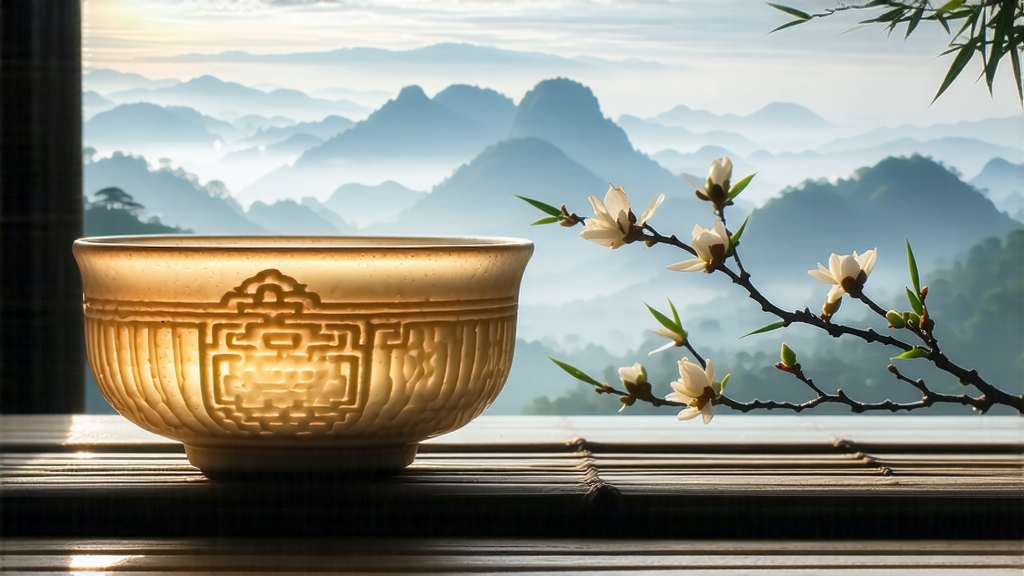
Among the six great families of Chinese tea, white tea is the quietest, and within that hush Silver Needle—Bai Hao Yin Zhen—speaks in the softest whisper. Yet for those who learn to listen, its voice carries centuries of Fujian mountain air, the patience of farmers who read weather in the veins of bamboo leaves, and a flavor so subtle it seems to appear only when the taster’s own mind grows still. This article invites the international reader to meet that whisper, from the first imperial tribute lists of the Song dynasty to the glass in your hand today.
-
A bud that outran history
White tea’s written record begins around 1064 CE when Song emperor Huizong—an artist more than a ruler—praised “white buds from Shui Ji” in his Treatise on Tea. Those buds were almost certainly the ancestor of Yin Zhen, picked before the Qingming festival when insects were still asleep and the mountain mist acted as nature’s greenhouse. Transported in bamboo tubes lined with banana leaf, they traveled to Bianjing along the Maritime Tea Road, costing more than gold ounce for ounce. When the Song fell, the technique retreated to the granite ranges of northern Fujian, surviving in monastery gardens until 1796, when the Da Bai cultivar was recognized as the ideal bearer of the style. By 1885 Fuding merchants were exporting “Silver Pekoe Needles” to London, where Victoria’s court christened them “white China tea,” a name that still appears in old Harrods ledgers. -
The cultivar that grows its own sweater
Authentic Yin Zhen is made exclusively from Fuding Da Bai Hao, a genetic sport whose buds can reach 3.5 cm and cloak themselves in a down so dense it looks like hoarfrost. That trichome layer is rich in amino acids and catechins; it acts as both sunscreen and flavor vault, concentrating the sweet, marine compounds that later dissolve into the cup. Gardens sit between 200–800 m on red granitic soils whose slow drainage stresses the bushes just enough to deepen bud fragrance. Because the plant is left unpruned in traditional “hua cha” style, the upper shoots stretch toward diffused light, producing fewer but more luxurious picks: one kilo of finished tea needs roughly thirty-eight thousand buds, all plucked before ten a.m. on days when humidity hovers around 75 %. -
Crafting a tea that is almost not touched
The motto of Fuding makers is “let the leaf finish itself.” After picking, buds are laid on bamboo trays only one layer deep so that air can caress every side. For the first six hours they rest in shade; enzymes begin oxidizing catechins, but at a glacial pace because cellular walls are still intact. Around sunset the trays are moved into weak spring sunlight for twenty to forty minutes—just long enough for the surface moisture to evaporate, never so long that the down yellows. This dual withering continues for forty-eight to sixty hours, during which the farmer judges solely by touch: a properly limp bud should fold like silk without snapping. Finally the tea is baked for fifteen minutes at 40 °C using charcoal covered in ash; the goal is not to dry but to “set the soul,” locking in the pale color and creamy aroma. No rolling, no pan-firing, no shaping—Silver Needle is the least manufactured tea on earth, yet paradoxically the most difficult to make well. -
How to coax moonlight into a cup
Water: 75–80 °C, the temperature of a mountain spring you can hold your finger in for three seconds.
Leaf: 3 g, about two heaping teaspoons of buds.
Vessel: tall glass or a 150 ml gaiwan; transparency lets you watch the needles stand upright, then slowly sink like reverse stalactites.
Steps:
a) Warm the glass, pour off.
b) Add buds; shake gently to release dry aroma of hay and watermelon rind.
c) Fill one-third with water, swirl for five seconds to “awaken,” then top up.
d) Steep 45 s; subsequent infusions add 10 s.
Good Yin Zhen yields five clear steeps: the first like dew on peony petals, the second like steamed almond milk, the third introducing a faint marine note reminiscent of fresh scallop, the fourth returning to sweetness,